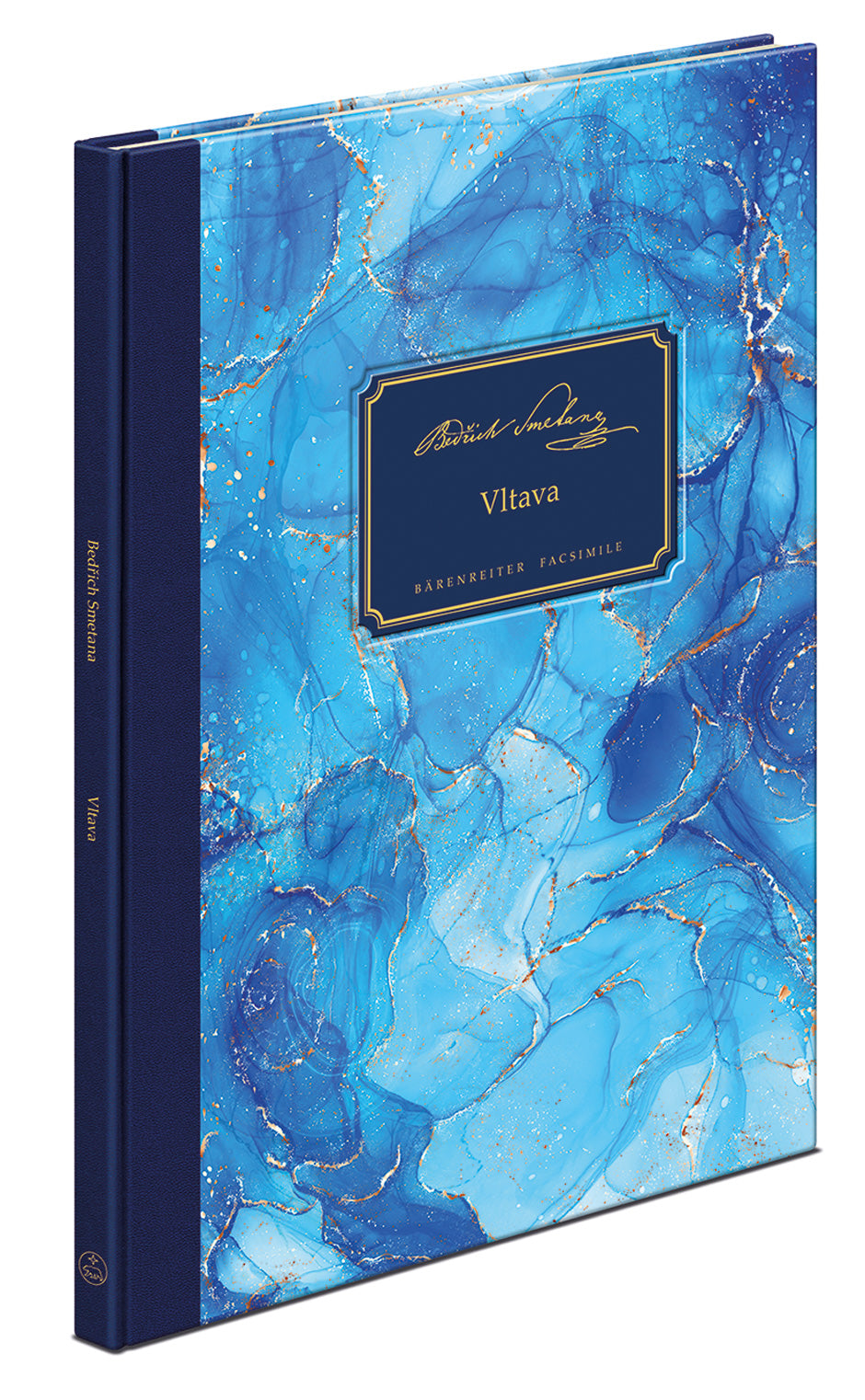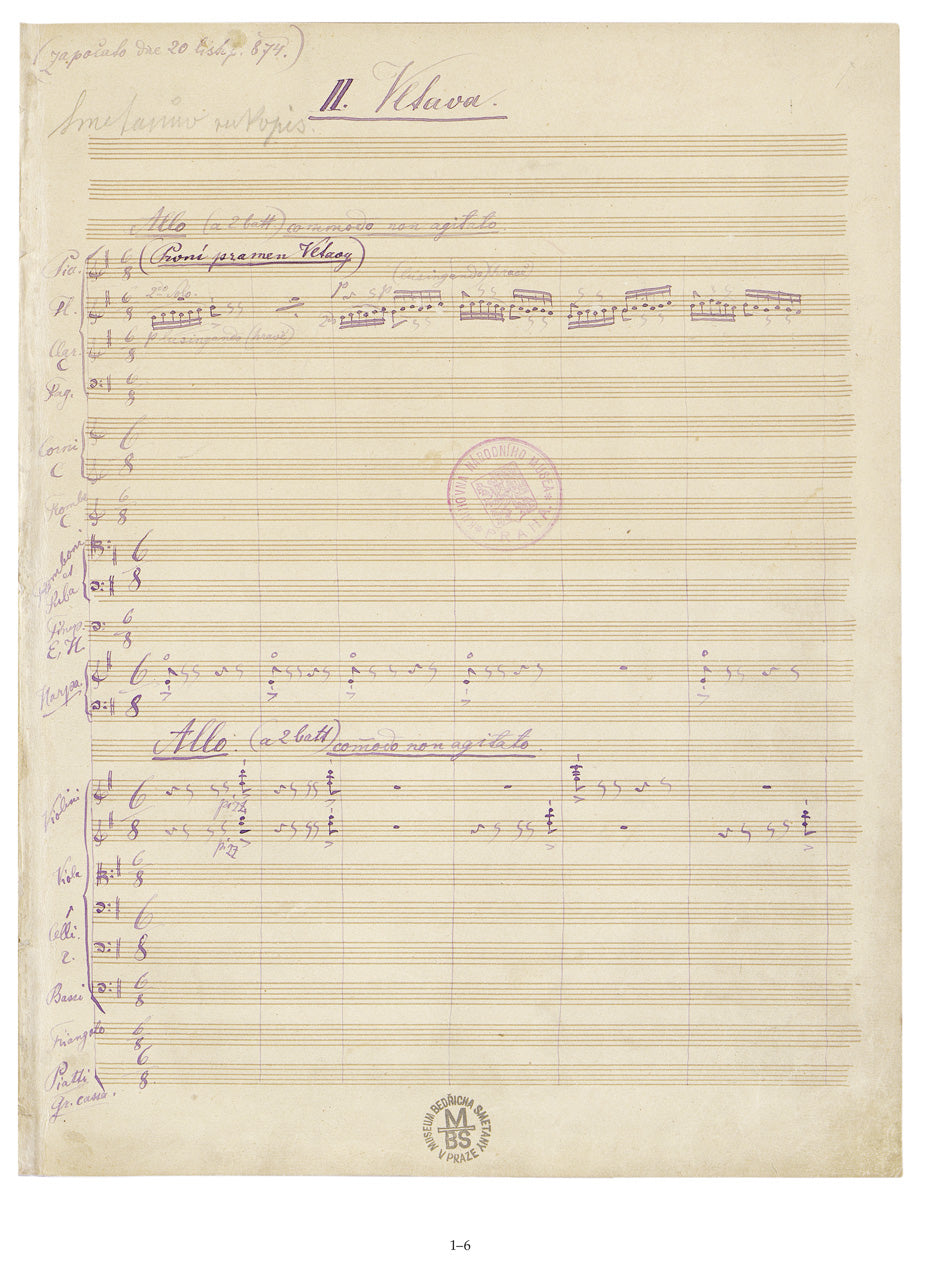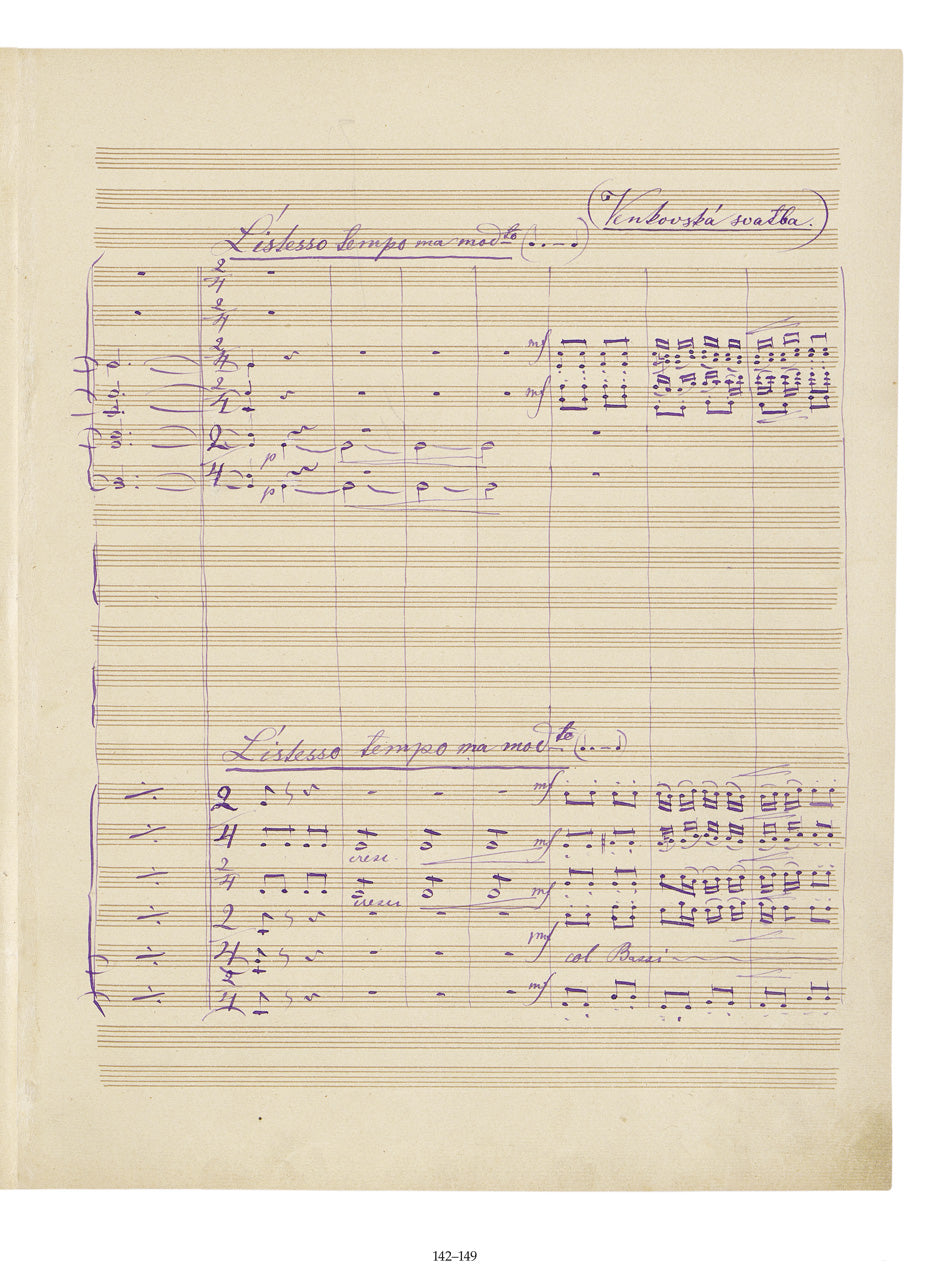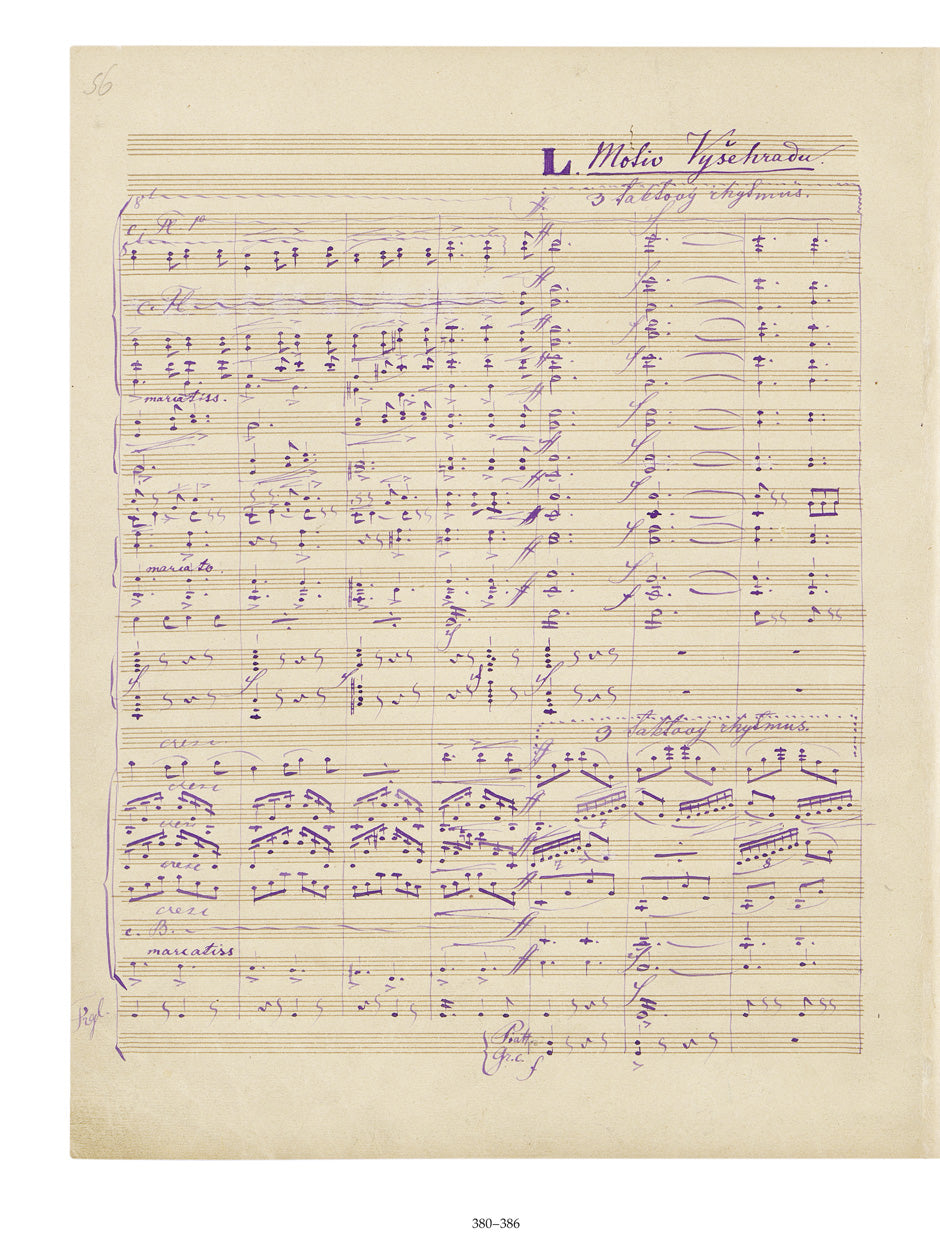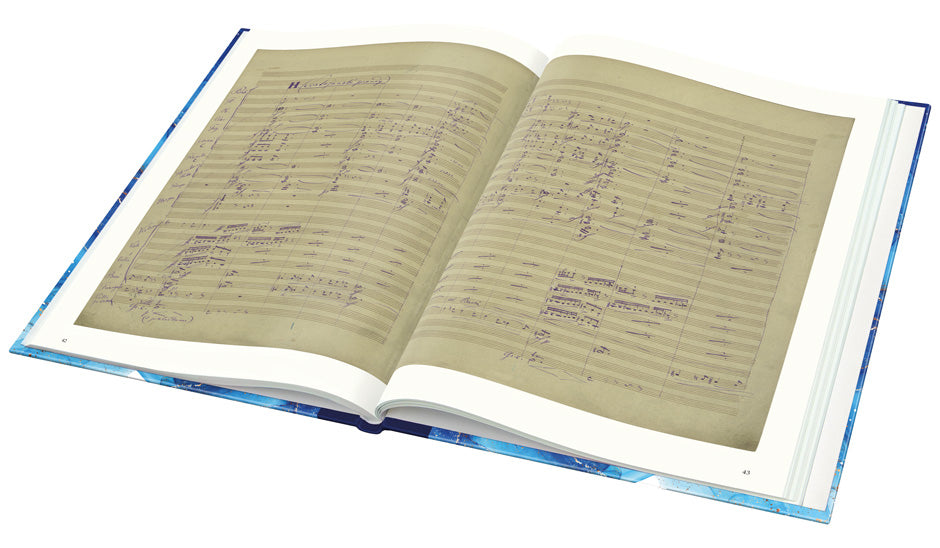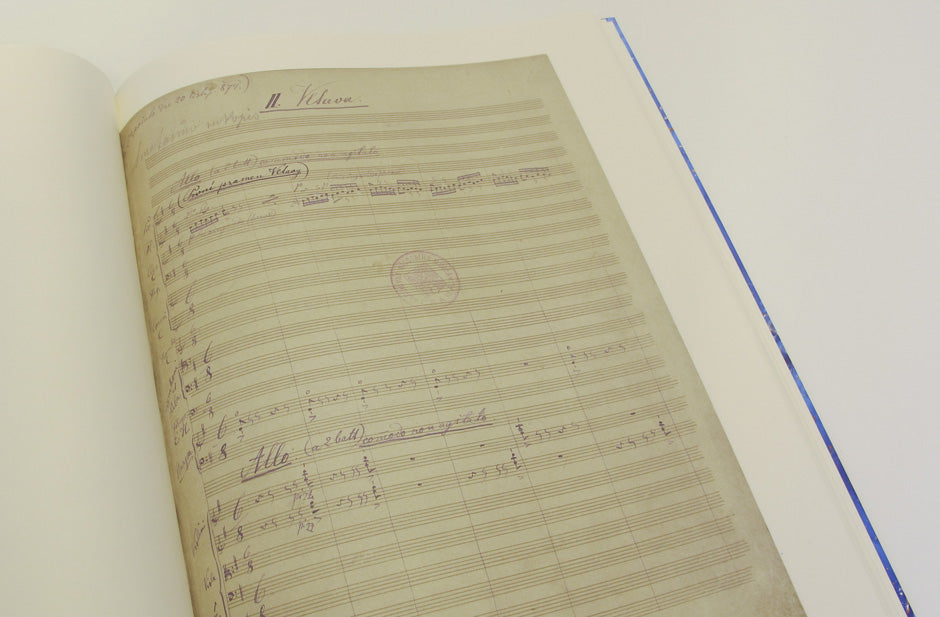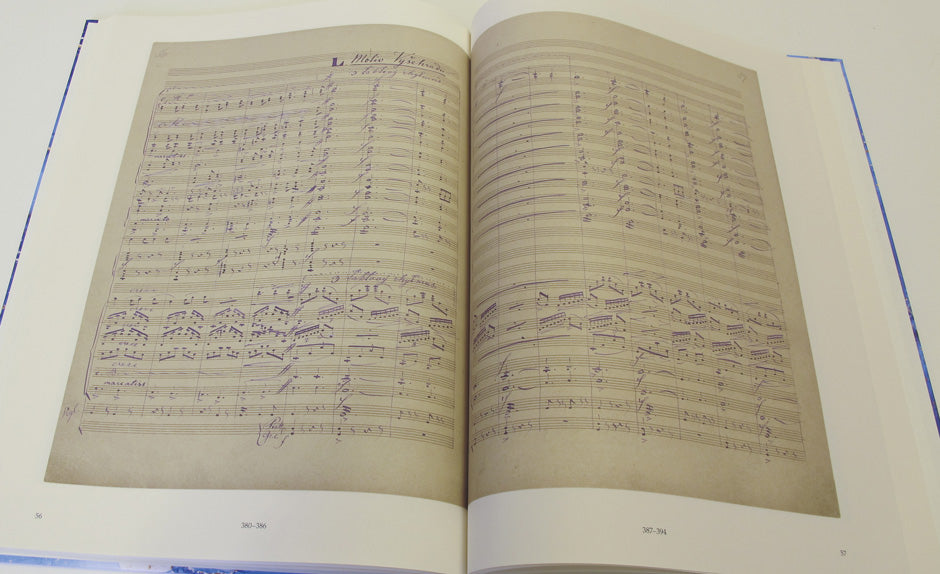Smetana: Vltava (The Moldau)
Expected to ship in about a week.
- Composer: Bedřich Smetana (1824-1884)
- Format: Facsimile
- Instrumentation: Orchestra
- Work: Vltava from Má vlast (My Country), JB 1:112
- Binding: Hardcover
- ISBN:
- Size: 11.4 x 15.4 inches
Description
"Vltava" (The Moldau), the second part of the cycle of symphonic poems "Má vlast" (My Country), is considered an icon of Czech music worldwide. At 50 years of age Smetana, who was in a state of complete deafness, composed it in just 19 days and completed it on 8 December 1874; he was never able to hear this or any other part of the "My Country" cycle.
"My highly esteemed friend, even in the tribulations of your physical suffering, may you retain that noble, inner sense of satisfaction from having performed great artistic work to the honour of the Czech lands. The name of Bedrich Smetana will remain forever written in your homeland. Your works have ensured it irreversibly." (Franz Liszt in a letter dated 5 May 1880 to Bedrich Smetana)
The autograph of "Vltava" bears witness to the composer's extraordinary musical imagination. Apart from five short motivic sketches on a single sheet, no other sketches have survived. It is highly probable that Smetana wrote "Vltava" directly into the score. He was most concerned that his notation should be error-free and unambiguous. Thus in the autograph, which was meticulously written in violet ink, there are no traces of a creative struggle for the final form of the work; there are no deletions or conspicuous corrections. If the composer subsequently saw the need for a change, he erased the original version so thoroughly that misinterpretations of the notation could be ruled out.
The unusually large number of dynamic and performance markings as well as verbal comments also testify to Smetana's endeavour to write down his musical ideas in every detail in an unmistakable manner – a remarkable autograph, not least in this respect.
Publishers use a lot of words to describe what they sell, and we know it can be confusing. We've tried to be as clear as possible to make sure you get exactly what you are looking for. Below are descriptions of the terms that we use to describe the various formats that music often comes in.
Choral Score
A score for vocalists that only contains the vocal lines. The instrumental parts are not there for reference. Generally, cheaper than a vocal score and requires multiple copies for purchase.
Facsimile
Reproductions of the original hand-written scores from the composer.
Full Score
For ensemble music, this indicates that the edition contains all parts on a single system (there are not separate parts for each player). In larger ensembles, this is for the conductor.
Hardcover
Hardbound. Generally either linen-covered or half-leather.
Orchestral Parts
Similar to a wind set, this is a collection of parts. In the case of strings, the numbers listed are the number of copies included, though generally these are available individually (often with minimum quantities required).
Paperback
When publishers offer multiple bindings (e.g. hardcover) or study scores, this is the "standard" version. If you're planning to play the music, this is probably what you want.
Performance / Playing Score
A score of the music containing all parts on one system, intended for players to share. There are not separate parts for each player.
Set of Parts
For ensemble music, this indicates that there are separate individual parts for each player.
Solo Part with Piano Reduction
For solo pieces with orchestra, this is a version that contains a piano reduction of the orchestra parts. For piano pieces, two copies are typically needed for performance.
Study Score
A small (think choral size) copy of the complete score meant for studying, and not playing. They make great add-ons when learning concertos and small chamber works.
Vocal Score
A score prepared for vocalists that includes the piano/organ part or a reduction of the instrumental parts.
Wind Set
For orchestral music, this is a collection of wind and percussion parts. The specific quantities of each instrument are notated.
With Audio
In addition to the printed music, the edition contains recordings of the pieces. This may be an included CD, or access to files on the internet.
With / Without Fingering (Markings)
Some publishers prepare two copies - a pure Urtext edition that includes no fingering (or bowing) suggestions and a lightly edited version that includes a minimal number of editorial markings.

